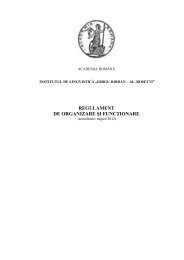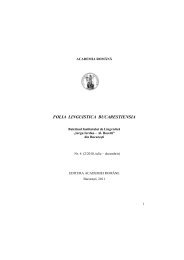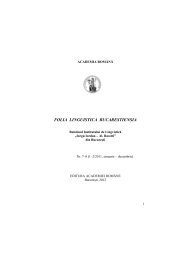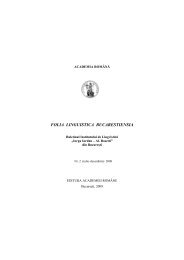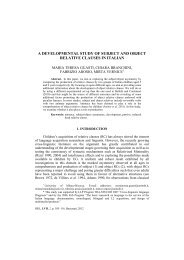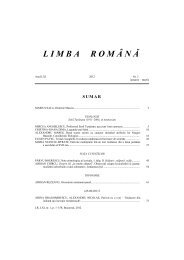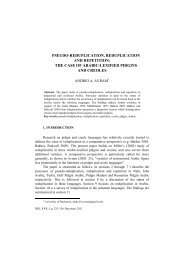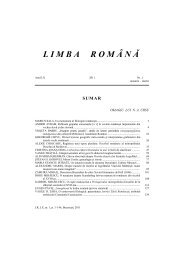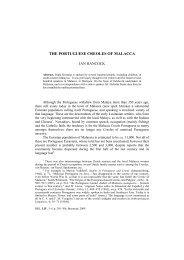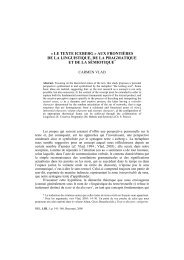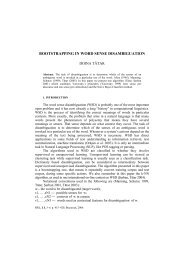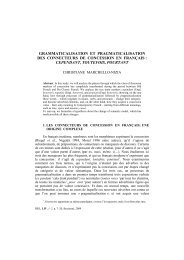'NOTHING' OR 'ANYTHING': TERMS IN IRISH AND SCOTTISH ...
'NOTHING' OR 'ANYTHING': TERMS IN IRISH AND SCOTTISH ...
'NOTHING' OR 'ANYTHING': TERMS IN IRISH AND SCOTTISH ...
You also want an ePaper? Increase the reach of your titles
YUMPU automatically turns print PDFs into web optimized ePapers that Google loves.
212Seosamh Watson 8screbull, cf. LEIA (: S-53-4) signifying one twenty-fourth of an ounce, cf. Kelly(2000: 584).3.0. The second category to be discussed in this class pertains to the sense ofsight and the number of terms in this particular section which have becomegeneralised in their usage is noteworthy.3.1.1. dath: the basic meaning of this first term is ‘colour’, Early Irish dath,‘colour, flash’, cf. Lat. fax, facis ‘torch, flame’, cf. LEIA (: D-26). This word mayhave come into prominence in expressions of the kind being discussed on accountof its phonetic similarity to dada (see above 3.1). As an expression it isparticularly favoured by the northern Irish province (Ulster) where LASID cites 68instances, with only 2 from Connacht and none each from either Munster orScotland. It is often preceded by a which may either represent the poss. adj.referred to previously or, alternatively, represent a reduced form of the numeralaon (cf. Wagner 1959: 216). Whether or not preceded by a, it can be qualified arbith/ ar chor ar bith with the sense of ‘at all’, but is not so qualified when precededby an unreduced form of the numeral. The system of initial consonant mutations,referred to at 3.1, has led to variant forms in initial g-, e.g. gath, whiledevelopments in the vowel quality of the word have resulted in forms withpalatalised initial, viz. geath, gheath. McKenna’s dictionary (1935: 45) records theexpanded forms a dhubh ná a dhath, dubh ná dath, lit. ‘its black or colour’, as wellas similar variants as being typical of Connacht or Munster dialects, while Lane(1922: 1088) cites an instance of the heightened poetic expression dath na ríoghruadh (lit. ‘the ruddy kings’ colour’).3.1.2. lí: this word is recorded by McKenna (1935: 45, 108) for Connacht andMunster in the phrase lí na léithe with the sense ‘nothing (left)’, lit. ‘the colour ofgreyness’, as well as lí léithe for Connacht (: 894), cf. also Ó Dónaill (1977: 781),ní raibh lí na léithe agam ‘I had not the slightest thing’. Lane (1922: 1088) recordsan alternative expression ní raibh lí lé ortha ‘there wasn’t the least thing on them’,with reference to clothing. Lí is referred by Lewis and Pedersen (1961: 7) to Lat.līuor, while MacBain (1982: 228) connects liath ‘grey’, from which the abstractnoun léithe derives, with Sk. palitáh ‘grey (through age)’ and Lat. pallidus, cf.palleō (DEL: s.v.) to be connected with terms signifying ‘pale, pale-blue’ in I-Elanguages, e.g. Old Slav. plavŭ ‘λευκός’.3.2. ceo: with the literal meaning of ‘mist’, Early Irish ceó ‘fog, mist’, cf.Goth. hiwi ‘appearance, Old English héow, híw ‘appearance, face, colour’, LEIA (:C-68-9) and qualified by aon or ar bith, is an expression found in Connacht alonein the LASID materials. Ceó may be related to the adj. cía ‘dark brown’, cf. LEIA



